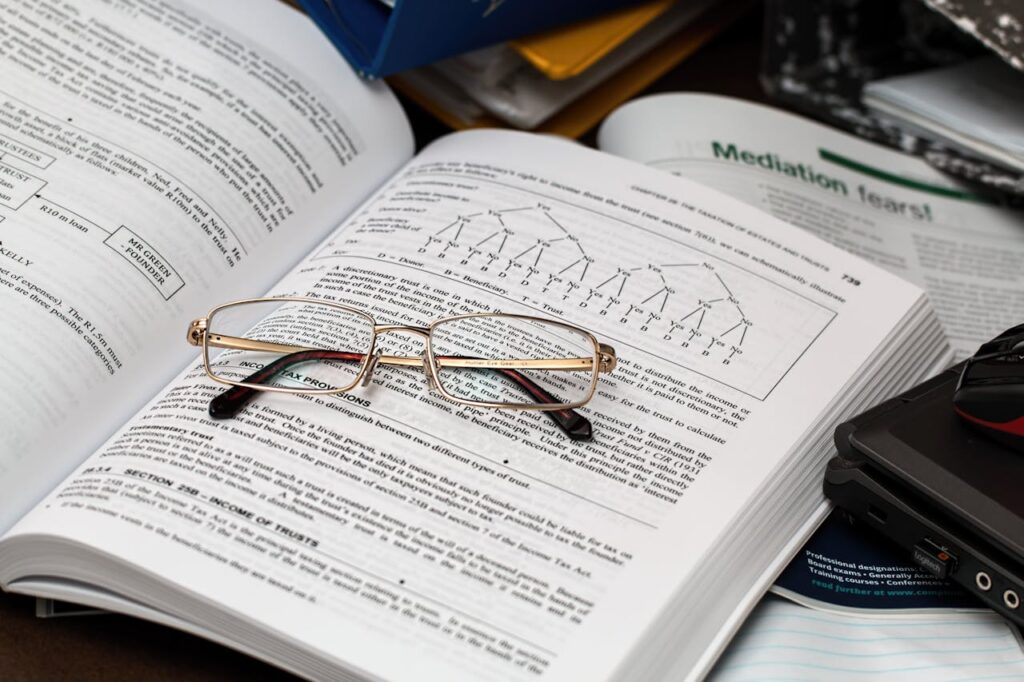Scientists Explain Why ‘Doing Your Own Research’ Leads to Believing Conspiracies

We live in an age where a single click can carry more weight than a lifetime of wisdom. Where hope can be bought for the price of a pill ordered online, and truth can be buried under a mountain of “what ifs” and “they don’t want you to know.” In moments of fear, when the diagnosis feels heavier than the body can bear, we search for light anywhere it might appear. Sometimes that light is real. Other times, it is only a flicker—a mirage shimmering in the desert of our desperation.
This is not a story about science alone. It is a story about being human—about the way fear, pain, and the longing for life can drive us toward dangerous choices. It is about how the promise of a cure, whispered through videos and posts, can feel more persuasive than the measured voice of medical evidence. And it is about one man, Lee Redpath, whose final chapter became a warning written not in theory, but in tragedy.

A Tragic Misstep: The Story of Lee Redpath
In April 2023, 45-year-old Lee Redpath was rushed to Addenbrooke’s Hospital in Cambridge, England. He arrived jaundiced, fatigued, and in the grip of acute liver failure. For more than three weeks, Lee had been taking fenbendazole, a drug commonly used to deworm animals. He hadn’t stumbled into this by accident—he had sought it out, convinced by videos and posts online that it could be a hidden cure for cancer. Desperate for healing and hope, he ordered the drug from a supplier in Ukraine and began dosing himself regularly.
But fenbendazole is not approved for human use. It is designed for livestock, not people, and certainly not for treating cancer. No clinical trials, no regulatory body, and no reputable medical institution has ever endorsed it as a cancer therapy. Yet, like many vulnerable individuals facing illness or fearing relapse, Lee placed his trust in the glowing testimonies circulating across social media. His decision, shaped by online falsehoods, ended up sealing his fate.
By the time he reached the hospital, his liver was already failing. Doctors discovered that his condition was made worse by a background of cirrhosis linked to alcohol use. The possibility of a liver transplant—the only potential lifeline—was ruled out, since transplant eligibility requires a period of sobriety that he had not yet met. As his organs shut down, there was little more the medical team could do. On April 29, 2023, Lee died from liver and kidney failure caused by prolonged fenbendazole use. The coroner later ruled his death a “misadventure,” a tragic collision of desperation, misinformation, and biology.
Lee’s story is not just about one man’s mistake. It is about the world we now live in—a world where hope and fear can be manipulated by unverified claims spreading faster than truth. His death stands as a painful warning of how dangerous misinformation can be, especially when it preys on people at their most vulnerable.

The Allure of a “Hidden Cure”
Fenbendazole was never designed for people. It is a veterinary drug used to treat parasitic infections in animals, primarily dogs and livestock. Yet in recent years, whispers of its supposed “anti-cancer” properties began circulating in online communities. Much of this stemmed from anecdotal stories shared in blogs, YouTube videos, and alternative health forums. In some cases, individuals claimed their tumors had shrunk after self-administering the drug. These testimonies, lacking medical verification, were picked up and spread rapidly across social platforms.
The hope for a hidden cure has a strong psychological pull. Cancer, with its devastating impact, often leaves people feeling powerless. Mainstream treatments like chemotherapy, radiation, or immunotherapy can be grueling, uncertain, and expensive. Against that backdrop, the idea of a cheap, accessible, “miracle drug” that has been supposedly suppressed by pharmaceutical companies feels irresistible. It plays directly into a narrative of distrust toward the medical establishment, fueling conspiracy theories that life-saving knowledge is being kept from the public for profit.
Scientific experts, however, have been clear: there is no evidence that fenbendazole is effective against cancer in humans. While some laboratory studies have tested its impact on cancer cells, findings in a petri dish or in animals cannot be equated with clinical benefit for patients. Without rigorous human trials, safety and efficacy cannot be established. In fact, as Lee’s tragic case shows, misuse of such drugs can be actively harmful. The real danger lies in individuals abandoning proven treatments in favor of untested remedies that offer little more than false hope.
Fenbendazole’s rise in online cancer circles is not unique—it follows a familiar pattern where desperation, anecdotal claims, and distrust converge. But when personal health is at stake, the cost of chasing rumors can be devastatingly high.

The Rise of Medical Misinformation
Lee’s death highlights a broader crisis: the unchecked spread of health misinformation online. In today’s digital landscape, anyone can present themselves as an authority. A YouTube video with confident claims or a Facebook post filled with testimonials can feel as persuasive as years of peer-reviewed medical research to someone in search of answers. Algorithms amplify emotionally charged content, making sensational claims travel farther and faster than measured scientific truths.
The COVID-19 pandemic showed us just how dangerous this can be. From false cures like drinking bleach to baseless theories about vaccines, millions were misled in ways that risked lives. The World Health Organization even coined the term “infodemic” to describe the overwhelming flood of false or misleading information that accompanies a public health crisis. Cancer misinformation, though less publicly spotlighted, follows the same pattern: alternative cures rise to popularity not because they are effective, but because they are viral.
The tragedy is that misinformation doesn’t just mislead—it actively erodes trust in credible medicine. Once someone believes that doctors or pharmaceutical companies are hiding cures, they are far less likely to accept proven treatments or follow medical advice. This not only endangers their own health but can ripple outward, influencing families and communities who may follow the same path.
In this environment, personal stories like Lee’s become crucial reminders. They cut through abstract debates and show the real-world consequences of letting misinformation flourish unchecked. Behind every viral myth, there are real people making real choices—sometimes with irreversible outcomes.

Why Evidence Matters
At the heart of this story lies an essential principle: evidence-based medicine. Unlike internet anecdotes, scientific research follows a rigorous process of testing, peer review, and replication. Treatments that make it through this gauntlet are not perfect, but they are grounded in data from controlled trials involving real patients. This system, while sometimes slow, exists to protect lives from the very dangers that claimed Lee’s.
Fenbendazole never underwent this process for cancer. Laboratory research into its effects remains preliminary, with no credible human trials demonstrating safety or efficacy. For a drug to be approved, regulators like the FDA or the European Medicines Agency require large-scale clinical data, which fenbendazole simply does not have. By contrast, modern cancer therapies—chemotherapy, immunotherapy, targeted drugs—while imperfect, have been validated through years of study, saving millions of lives worldwide.
The problem arises when hope collides with the slow pace of science. Patients facing grim diagnoses may not have the luxury of waiting for trials that take years. This urgency can push them toward unproven alternatives. Yet abandoning evidence comes with its own risks: not only might the treatment fail, but it can also cause direct harm, delay legitimate care, or disqualify someone from interventions like organ transplants.
True empowerment comes not from chasing untested cures, but from understanding why medical evidence exists in the first place. It is not about suppressing hope—it is about grounding hope in reality, so that it does not betray the very people who need it most.
The Human Cost of False Hope
Behind every story of misinformation is a human being—someone vulnerable, searching, and often scared. Lee’s death is one among many. Around the world, there have been cases of people turning to bleach solutions, industrial chemicals, or veterinary drugs because of claims they encountered online. Each story is a reminder that false hope can be just as destructive as despair.
What makes this especially tragic is that people who fall for these claims are not naive—they are often deeply resourceful, determined, and willing to take action for their health. Their vulnerability is born from courage: the courage to try, to fight, to refuse to give up. Misinformation preys on this strength, twisting it into a weakness. It turns resilience into recklessness, and desperation into tragedy.
Families are left not only grieving but questioning—could things have been different if the truth had been louder than the lies? Lee’s partner, speaking at the inquest, said she believed a public warning was needed. Her words reflect a larger truth: misinformation does not just affect individuals; it ripples through loved ones, communities, and healthcare systems struggling to prevent preventable harm.
The human cost of false hope cannot be measured only in statistics or case reports. It is felt in empty chairs at dinner tables, in hospital wards filled with regret, and in the quiet grief of lives cut short by choices made in confusion and desperation.
A Call to Discernment
Lee Redpath’s story forces us to confront an uncomfortable question: how do we navigate a world where hope and deception coexist online, often indistinguishable at first glance? The answer lies not in rejecting hope but in grounding it in truth. Hope without evidence is a mirage—it promises water in the desert but leaves us more parched than before.
As individuals, we must learn to question before we consume, to pause before we share, and to verify before we act. That means turning to reputable sources, asking doctors difficult questions, and recognizing that if something sounds too good to be true, it probably is. Collective vigilance matters too—tech companies, regulators, and health institutions have a responsibility to ensure that harmful misinformation does not outrun the facts.
But beyond systems and structures, there is a deeper invitation here. Lee’s story asks us to rethink what it means to live with uncertainty and fear. Instead of grasping at unproven cures, can we channel that energy into building trust, advocating for research, and supporting each other in the hard, messy journey of healing?
In the end, the most powerful cure we can cultivate is discernment—the ability to hold onto hope without letting it blind us. If we can learn this, then perhaps Lee’s story, though tragic, will not have been in vain. It will stand as a reminder that truth matters, evidence matters, and that the cost of forgetting this is far too high.
Loading...

